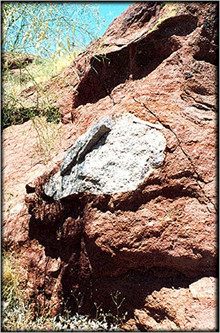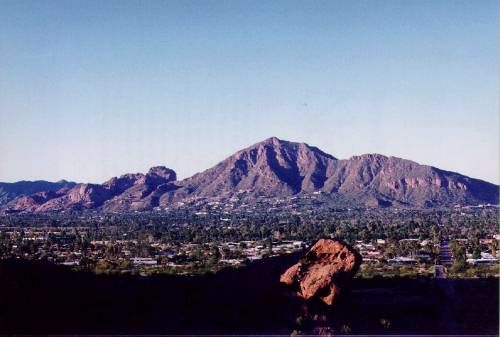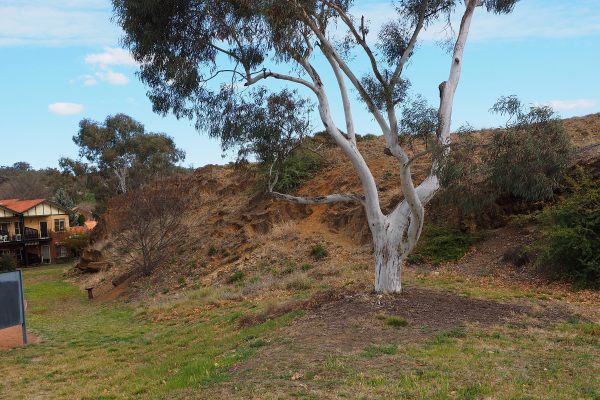Rising out of the Arizona desert, Camelback Mountain is an iconic landform visible across most of the Valley of the Sun. The mountain is named for its signature humps and a ridge that resembles the head of a reclining camel. This mountain, popular with urban hikers, exposes some of the oldest and some of the youngest rocks found in the area in the same place!
The large hump is made up of granite, an igneous rock that formed when molten rock cooled and solidified, deep in the then-still relatively new crust of Arizona, about 1.4 billion years ago. For most of its history, this granite remained buried, but about 25 million years ago, it emerged when the South Mountain range, located 10 miles to the south of Camelback, was gradually uplifted by crustal movements. Great blocks of granite slowly slid down the flanks of the rising South Mountain and out into the Valley, forming the hump of Camelback and other local peaks and buttes including the Papago Buttes in Papago Park, Hayden Butte in Tempe, and Red Mountain near Fountain Hills.
The sides of these exposed mountain-sized granite blocks would have been very steep and thus prone to frequent landslides: churning flows of different-sized chunks of granite mixed with deep red sand and gravel, which tumbled down and later solidified into layers of red sedimentary rock that lie atop the granite hump on the west side of Camelback Mountain and form the “head.” Not surprisingly, geologists have named these red beds the Camels Head Formation! It is easy to see that these red beds are chock-full of pieces of granite broken off the camel’s “hump.” The fact that these granite pieces (or clasts) are angular and jagged, instead of rounded, indicates that they did not travel far from their source: they were transported by landslides and not a stream. At about 25 million years old, the Camels Head Formation is one of the youngest rock types found in the Valley of the Sun, but it was derived from some of the oldest rock!
Hiking trails gain an elevation of 1,280 ft to reach the 2,704-foot high summit. Echo Canyon Recreation Area occupies the head of the mountain and has many hiking trails. Caves on the north side of the mountain signify that it was likely used by Native Americans before European colonization. A warning to hikers: there are rattlesnakes on the mountain





















Follow us on Twitter to get the latest on the world's hidden wonders.
Like us on Facebook to get the latest on the world's hidden wonders.
Follow us on Twitter Like us on Facebook